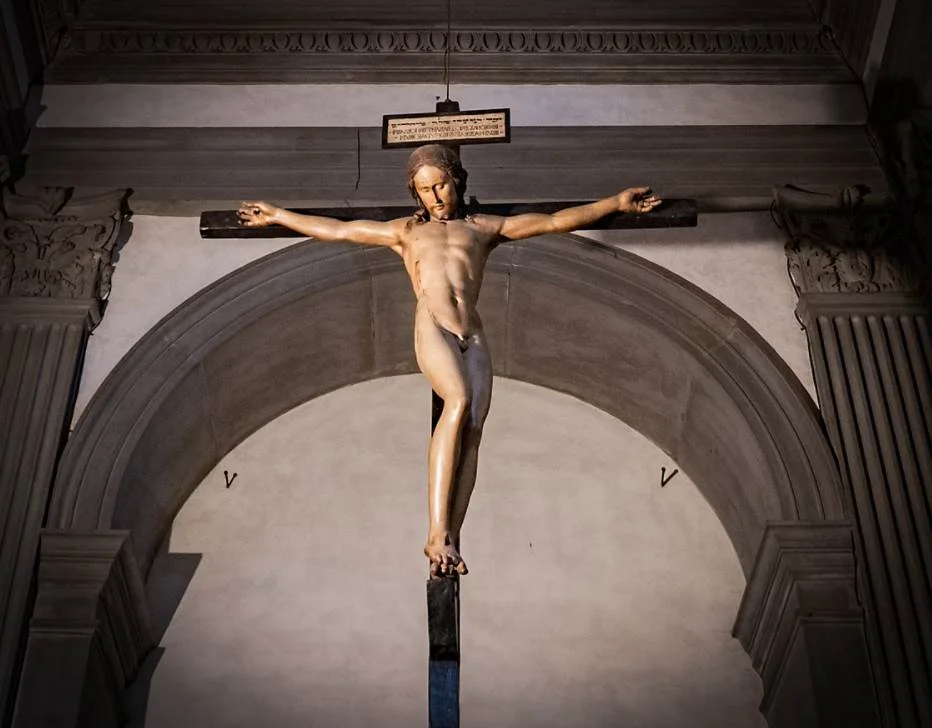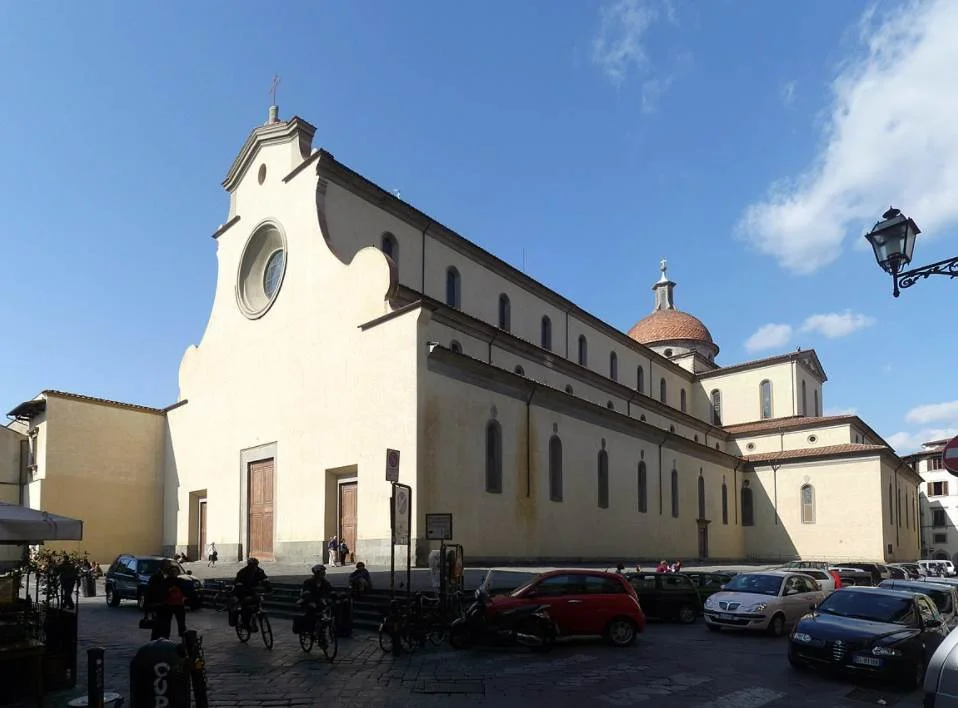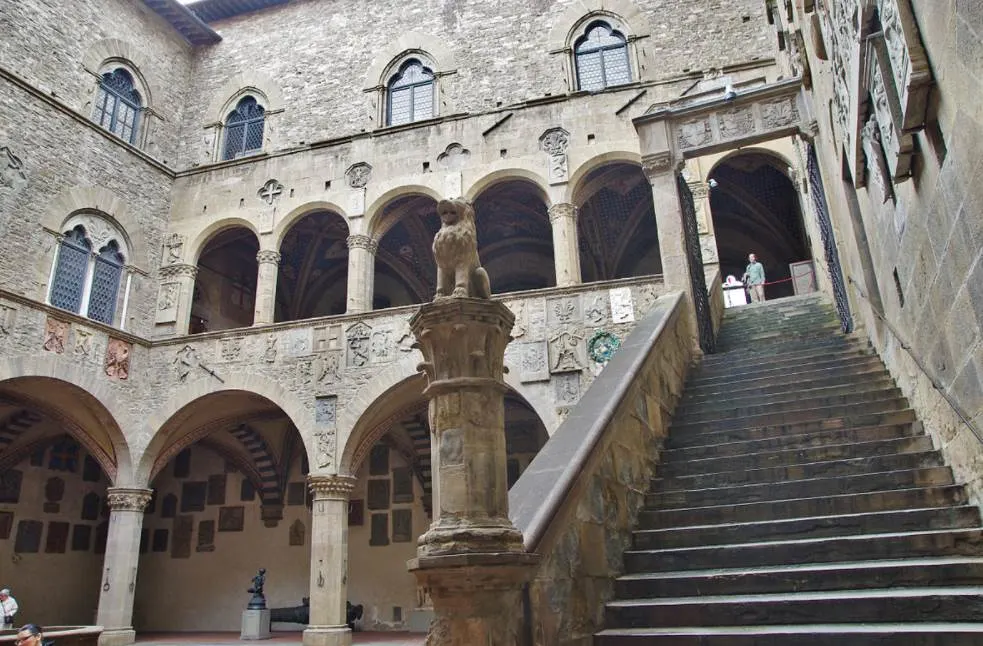Even though the sculptures described in this article aren’t universally accepted as being made by the hand of Italian artist of the Renaissance period Michelangelo Buonarroti (1475-1564), it’s likely at least one most probably is.
Let’s take a closer look at Crucifix by Michelangelo, the name of a work that potentially describes two different works of the Italian artist.
1. Both sculptures were made while Michelangelo was a teenager
Crucifix by Michelangelo is a set of two polychrome wooden sculptures depicting Jesus Christ as he hangs on the cross following his crucifixion.
Both works are estimated to have been completed anywhere between 1492 and 1495. Because Michelangelo was born in 1475, this most probably means that he was still a teenager when he completed one of them, and probably in his early twenties when he completed the second.

2. The earliest version was created while he was studying corpses
The first version was completed in 1492, the year that his patron, Lorenzo de’ Medici, died. Before that, he was studying at the Platonic Academy in Florence, an academy that was founded by the powerful Medici family.
This academy was dissolved shortly following Lorenzo’s death which forced Michelangelo to move back into his parental home. He quickly found another outlet, though, which was studying the corpses of the morgue of the hospital of the Church of Santa Maria del Santo Spirito, one of Florence’s basilicas.
Here he studied the anatomy of the bodies to enhance his sculpting skills. About a decade later he would end up completing his most famous sculpture, the Statue of David.

3. It’s still located in the church Michelangelo donated it to
Because of fact that the authority managing the church and hospital was so kind of letting Michelangelo play around with the corpses in their morgue to enhance his anatomical knowledge of the human body, he made them a little gift.
Most art historians agree today that the artist created this wooden sculpture as a gift for the church, most probably to decorate the high altar of the Basilica di Santo Spirito in Florence.

Today, the sculpture isn’t located above the high altar of the church but in the octagonal sacristy of the church. It has been in this location since it was moved here in 1607. This section can be reached from the western aisle of the building.

4. The 2nd sculpture was bought for €3.2 million in December 2008
The second polychrome sculpture that has been attributed to Michelangelo remains a mystery until today. This makes it all the more remarkable that the Italian government bought the world from an art dealer named Giancarlo Gallino for €3.2 million in December 2008.
This significantly smaller sculpture is currently located at the Bargello, also known as the “Palazzo del Bargello,” a former prison that was turned into an art museum.
Other famous works located in this museum are Bacchus by Michelangelo and David by Donatello (among numerous other artworks by famous Renaissance artists).

5. Some art historians aren’t convinced it’s truly a Michelangelo
The huge sale amount was quickly put into question when some art historians started casting doubts on the attribution of the sculpture. This isn’t unreasonable because there aren’t any contemporary records about the work.
This means that the attribution was made solely on stylistic criteria, not an exact science to say the least. Up until today, the answer to the question remains an open one, even though the attribution Michelangelo remains confirmed by both the Bargello Museum and the Italian government.

More interesting facts about Crucifix by Michelangelo
6. Even though both sculptures are humble in size, the first version is significantly larger than the second one. The sculpture that was completed in 1492 has dimensions of 142 × 35 centimeters (55.9 × 13.8 inches).
Compared to this, the second version, which was completed in 1495, appears to be just a miniature as it only has dimensions of 41.3 x 39.7 centimeters (16.3 × 15.6 inches).
7. One of the most remarkable facts about both crucifixes is that they depict Jesus Christ naked. Even though he is most commonly depicted wearing at least some form of drapery, this isn’t an accurate depiction according to the Gospels.
The removal of the clothing of Jesus Christ by Roman soldiers is even specifically mentioned in Psalm 22:18 where it states “They part my garments among them, and cast lots upon my vesture.” This is just one of the many mentions of Christ’s nakedness during his ordeal.

8. The artist included a sign that read exactly as it did during Christ’s real crucifixion according to the Gospels. These words on the sign are written in Hebrew and translate to “Jesus of Nazareth, King of the Jews.”
9. At the end of the crucifixion, a Roman soldier is believed to have shown leniency and killed Jesus Christ with a spear. Michelangelo included both this wound and the blood dripping from it in the first version of the sculpture.
10. One of the art historians who aren’t convinced that the second version of the Crucifix sculptures wasn’t created by the hand of Michelangelo is German Margrit Lisner.
The expert on the matter compared multiple sculptures from the final decade of the 15th century and attributed the work to another sculpture named Jacopo Sansovino (1486-1570).
Regardless, these are speculations so it remains unclear whether or not the Italian government paid millions of euros for a real Michelangelo or not.

